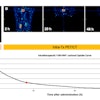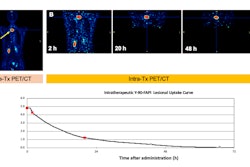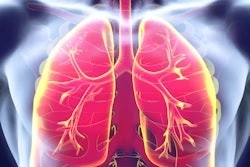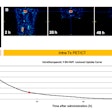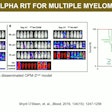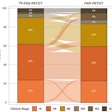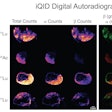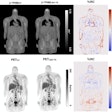An emerging PET/CT radiotracer may be more predictive of progressive pulmonary fibrosis in interstitial lung patients than F-18 FDG PET/CT, according to research presented June 8 at the 2024 Society of Nuclear Medicine and Molecular Imaging Annual Meeting (SNMMI).
Fibroblast activation protein inhibitor (FAPI) PET/CT demonstrated heightened and extensive uptake in interstitial lung disease (ILD) compared to FDG in a cohort of 97 patients with ILD. Because conventional imaging methods offer limited assistance in the early stages of ILD, the findings underscore the potential utility of FAPI PET/CT as an imaging modality for diagnoses, according to a statement from SNMMI.
“While F-18 FDG PET/CT can offer some information about ILDs, FAPI PET/CT could provide even more information to physicians, especially regarding progressive pulmonary fibrosis. This could make it a promising diagnostic tool,” noted Qi Fang, a student in resident training in the department of nuclear medicine at Guangzhou Medical University in Guangzhou, China.
“In particular, our research shows that patients with high whole-lung [mean standardized uptake value (SUVmean)] on FAPI scans tend to manifest progressive pulmonary fibrosis one year later," Fang said. "As such, these patients should be more carefully treated, and anti-fibrosis treatment should begin as early as possible.”
ILD encompasses a spectrum of disorders characterized by pulmonary alveolitis and interstitial fibrosis. Except for idiopathic pulmonary fibrosis, some ILDs, despite regular treatment, manifest progressive pulmonary fibrosis (PPF), leading to heightened mortality, the researchers noted.
To evaluate the value of FAPI PET/CT versus FDG in ILD diagnoses, Fang and colleagues conducted both within one week and assessed various PET/CT parameters. They followed with Kerbs von den Lungen-6 (KL-6) and pulmonary function test results within two months of PET/CT. Follow-up included CT, PFT, and clinical symptom assessment after one year to differentiate between patients with PPF and non-PPF. Comparative analysis involved PET/CT parameters of both tracers.
The group found that all PET/CT parameters in FAPI PET/CT were significantly higher than the corresponding ones in F-18 FDG PET/CT. In addition, all FAPI PET/CT parameters in PPF patients were markedly higher than those in non-PPF patients. Of the various parameters, the whole-lung SUVmean emerged as an especially notable factor for predicting PPF in ILD patients.
Click here for our full SNMMI coverage.


